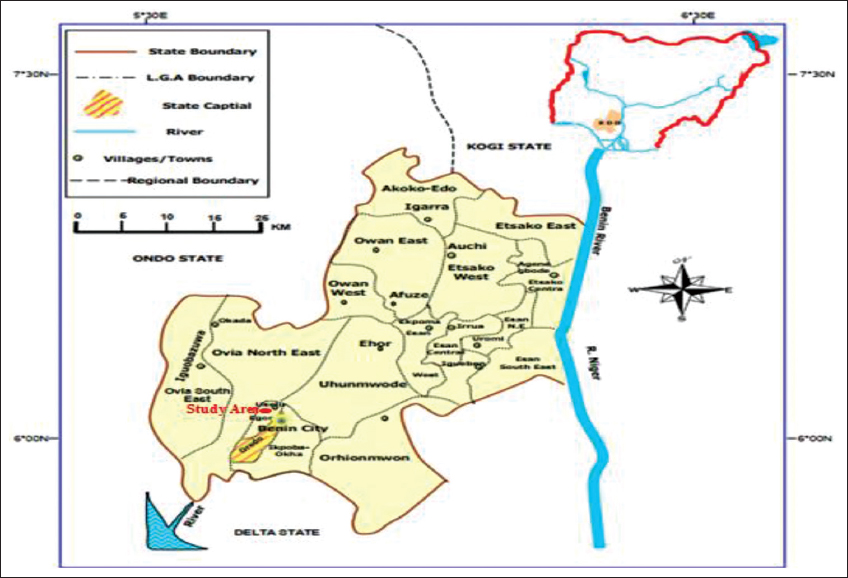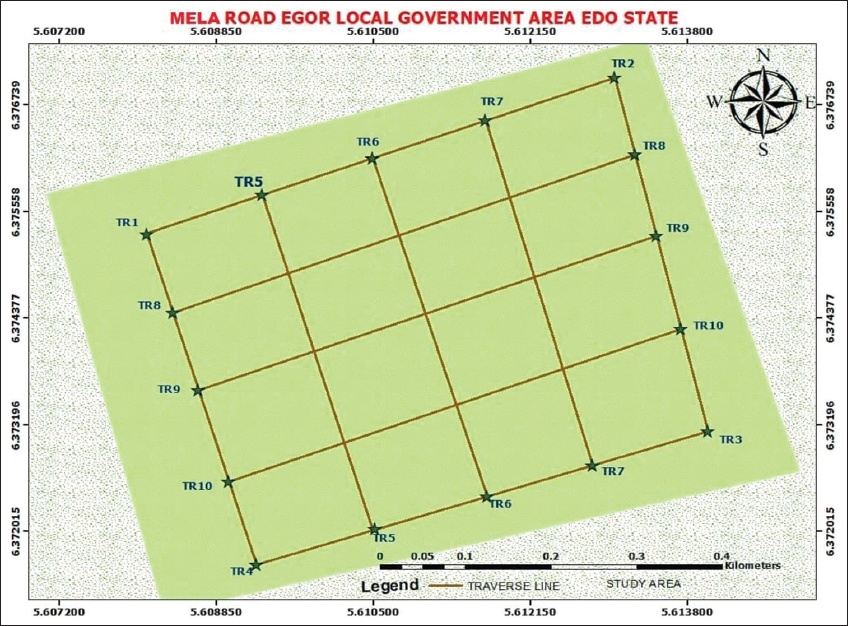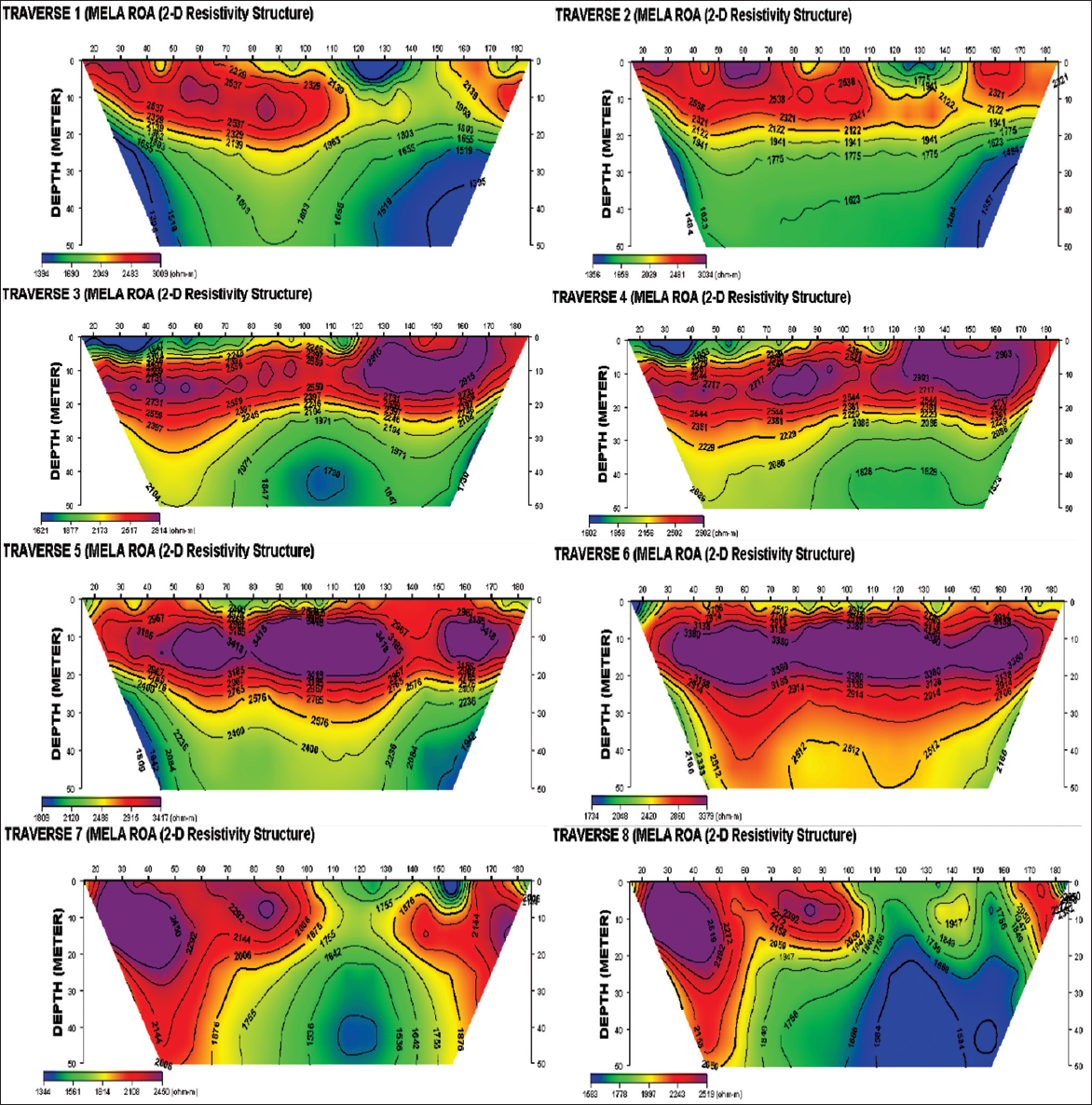Geophysical assessment of soil erodibility using 2D and 3D electrical resistivity imaging: A case study of Mela Road, Uselu, Benin city, South-South Nigeria
O. J. Airen1*, T. Akeredolu2
1Department of Physics, Faculty of Physical Sciences, University of Benin, Nigeria, 2Department of Animal and Environmental Biology, Faculty of Life Sciences, University of Benin, Nigeria
ABSTRACT
Scouring is a recurrent problem around road infrastructures in Uselu community. Geophysical investigation of the near surface using the 2D and 3D electrical resistivity imaging (ERI) was carried out, therefore, to assess the soil erodibility with a view to proffering a mitigation measure to the problem. A total of 10 traverses, 200 m long each were occupied in grid format using the Wenner electrode configuration. 2D Wenner resistivity data were acquired along each traverse. The data were inverted to reveal a spatially continuous resistivity distribution in 2D and 3D near surface in the study area. The 3D resistivity distribution was also sliced into a five-layer depth to examine the near surface at close range. The 2D results reveal a depth of 50 m across each traverse. Resistivity values generally vary from 1074 Ωm to 3418 Ωm across the study area. Three resistivity structures are delineated which all indicate sand with resistivity values varying from 1074 Ωm to 1998 Ωm, 2009 Ωm to 2915 Ωm, and 3009 Ωm to 3418 Ωm. The 3D depth slice into five layers; 0–5 m, 5–10.8 m, 10.8–17.4 m, 17.4–25 m, and 25.0–33.7 m, having corresponding resistivity values that vary from 659 to 8417 Ωm, 1246 Ωm to 8417 Ωm, 1246 Ωm to 4452 Ωm, 1246 Ωm to 4452 Ωm, and 1246 Ωm to 2355 Ωm. The 3D resistivity distribution shows resistivity values ranging from 1119 Ωm to 3381 Ωm and a maximum depth of 39.6 m. These results reveal that the entire study area is highly vulnerable to erosion as sedimentary subsoil with ERI cutoff above 50 Wm are classified as highly erodible soil. This is thus responsible for the persistence erosion in the entire study area and the occurrence is suspected to be more acute as the depth of scours could impact as deep as 40 m into the subsurface which, in turn, will further expose infrastructures such as bridges, abutments, road pavements, pylons, and other critical amenities in the community to collapse due to scouring. Detailed geotechnical testing is immediately recommended to prioritize critical infrastructures in the area for salvaging before comprehensive erosion control program.
Keywords: Erosion, resistivity, road infrastructures, scouring, wenner array






